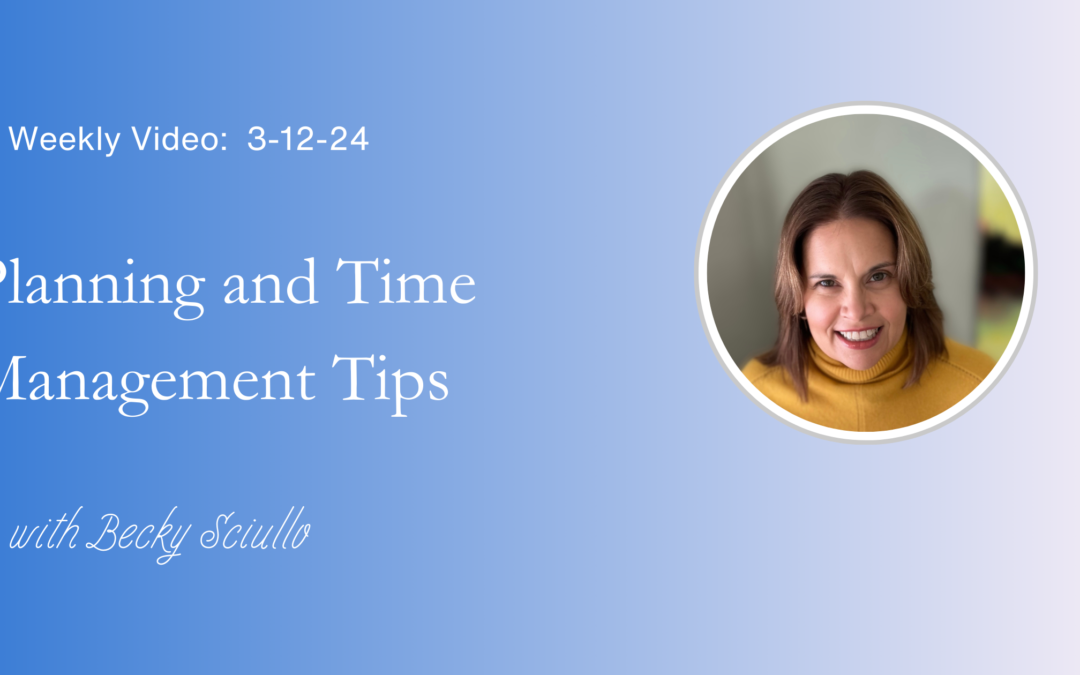
by Rebecca Sciullo | Mar 12, 2024 | Planning, Productivity, Resources, Time Management
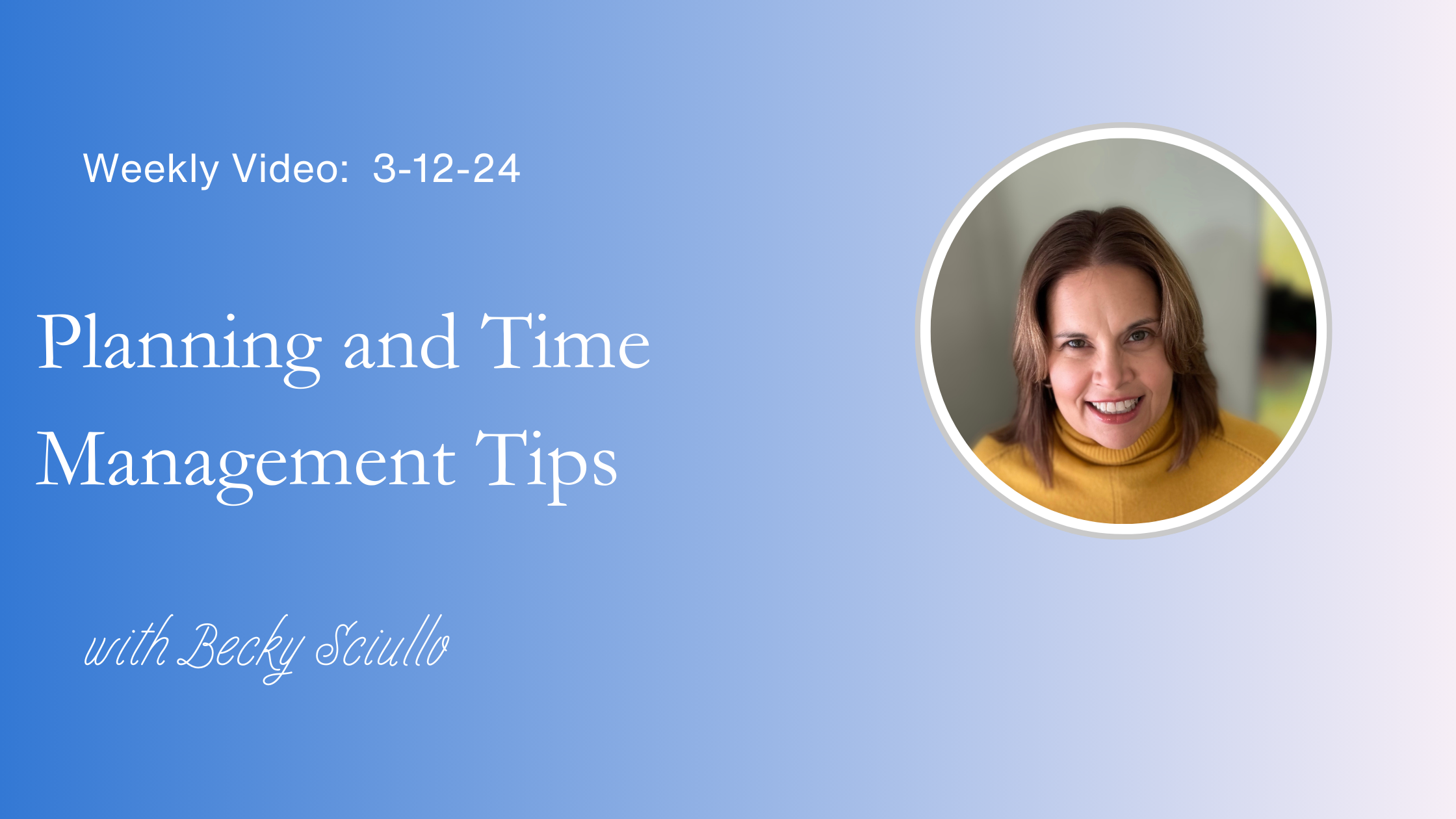
Mastering Time Management and Planning: Your Path to Productivity
This week’s video focuses on some ideas for planning and time management. Recognizing that implementing new marketing strategies sometimes means there is more to do, I share a few ideas around planning and time management that have helped me a lot.

Video Recap
1 – The Rule of 3
I use the number 3 to guide my focus on yearly goals and daily tasks. Choosing three things to strive for or accomplish out of a seemingly never-ending to-do list helps prioritize what needs to be done without getting overwhelmed.
2 – Revisit Your Plans More Than Once a Year
Planning isn’t a once-a-year affair. Establish yearly goals but review them quarterly to adapt to evolving priorities. Break it down further by creating monthly, weekly, and daily plans. This approach encourages flexibility and accomplishment while staying focused on long-term objectives.
3 – Time Blocking
Maximize productivity by scheduling specific tasks and activities on your calendar. Designate dedicated time slots for work projects, studio time, or self-care to stay organized and accountable.
Trust the Process
Remember, progress is about consistent small steps over time. Celebrate each milestone, no matter how small, and trust in the journey toward your goals.
Resources Mentioned in the Video
Create a 12-Month Action Plan: Use the code PLANNING for a 70% discount.
Michael Hyatt’s Full Focus Planner
Join my Weekly Email Newsletter
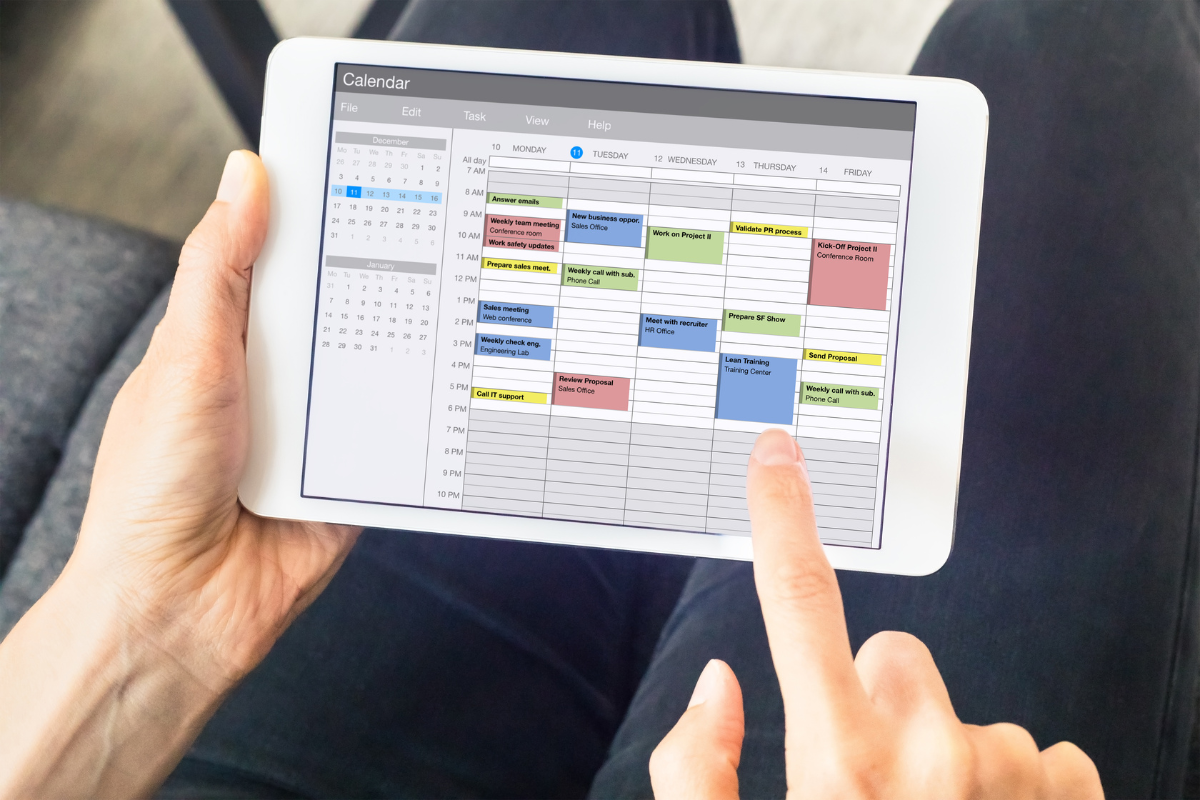
This post contains affiliate links which means I receive a small commission if you make a purchase using the link. For more information, see my full terms here.

by Rebecca Sciullo | Sep 25, 2023 | Learning
Adding a reading habit to your routine can offer valuable ideas for your art business. To encourage you in that effort, Artisan Advantage is getting ready to reboot the Artist Book Club. This time around, the Club is going to be a more interactive model. While details are put into place, we’re going to review some books on past Artisan Advantage reading lists. Hopefully, you will find something helpful here for your business.
Here we’ll revisit Stephen R. Covey’s timeless masterpiece, The 7 Habits of Highly Effective People. This book has guided people of all professions seeking personal and professional growth. In this past book club pick, Covey presents a holistic approach to self-improvement that goes beyond productivity tips. Here’s a bit of what makes this book a universal classic.
Get The Book
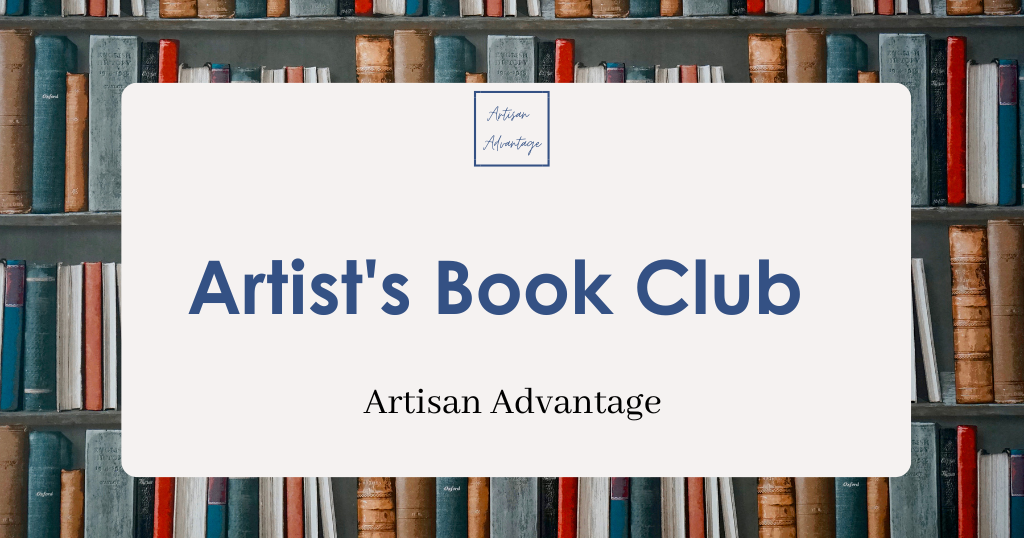 This post contains affiliate links which means I receive a small commission if you make a purchase using the link. For more information, see my full terms here.
This post contains affiliate links which means I receive a small commission if you make a purchase using the link. For more information, see my full terms here.
7 Habits Recap
Covey’s first three habits revolve around personal effectiveness. The foundational “Be Proactive” encourages taking responsibility for your choices, while “Begin with the End in Mind” stresses the importance of setting clear goals. “Put First Things First” urges prioritization based on importance rather than urgency, a concept that can revolutionize time management.
The following three habits deal with interpersonal effectiveness. “Think Win-Win” advocates for a mindset of collaboration and mutual benefit. “Seek First to Understand, Then to Be Understood” highlights communication – critical in building meaningful relationships. “Synergize” emphasizes the power of teamwork and the creation of solutions greater than the sum of their parts.
Covey’s final habit, “Sharpen the Saw,” emphasizes self-renewal through physical, mental, emotional, and spiritual development. This habit underscores the importance of continuous growth and balance in our lives.
Covey’s principles are not quick fixes but enduring, guiding philosophies.
Get your book here.
How Can I Apply This to My Art Business?
While the book doesn’t focus specifically on the art industry, its principles are universally applicable and can be adapted to various professional contexts, including the art world. Here’s how these habits can apply to an art business:
1 – Be Proactive
To be proactive means taking control of your business. Instead of waiting for opportunities to come your way, actively seek out exhibitions, collaborations, and networking events. Take responsibility for your artistic direction and business decisions.
2 – Begin With the End in Mind
Define your vision and long-term goals. Consider where your art business will be in three, five, or ten years. This habit helps you create a roadmap for your artistic journey.
3 – Put First Things First
Prioritize your art marketing and proactive business activity. Allocate time for creating new artwork and developing your skills. Don’t let distractions consume all your time; focus on what will move your business forward.
4 – Think Win-Win
Collaborations and partnerships can be very beneficial for an art business. Approach negotiations and collaborations with a win-win mindset, seeking mutually beneficial outcomes. Building positive relationships with galleries, collectors, and fellow artists can lead to long-term success.
5 – Seek First to Understand, Then to Be Understood:
Effective communication is crucial in your business. Understand the needs and preferences of your target audience and collectors. Listening and empathizing with their perspectives can help you create art and communications that resonate with them.
6 – Synergize
Collaboration can lead to innovative projects and increased exposure—partner with other artists, galleries, or organizations to create unique exhibitions or events. Combining your strengths can lead to greater success than working alone.
7 – Sharpen the Saw
Self-care is essential, particularly with a self-owned business. Take time to nurture your creativity, mental well-being, and physical health. Continuous learning and personal development will enhance your artistic skills and business acumen.
Applying these habits to your art business can help you become a more effective artist-entrepreneur. You can build a thriving art business that reflects your passion and creativity by aligning your actions with your artistic vision, improving communication, and fostering positive relationships within the art community. Covey’s principles provide a framework for achieving personal and professional success in art.
Join my weekly newsletter where I’ll send you tips to help you with your art business.
by Rebecca Sciullo | Oct 2, 2018 | Learning, Planning, Productivity, Time Management
 “I don’t have time.”
“I don’t have time.”
If you’re like most people, you probably say or think those words quite often. Lack of time often becomes a catch-all excuse for not getting work done in your art business – like creating, learning or just slowing down, taking time to plot and plan out your next steps.
Between work, family needs, school, and the endless items on your to-do list, it can be tough to find a spare minute to return an email, much less to post on social media, find and apply to shows or make it to a networking event. It may seem like if you just had one extra hour in the day, you would finally be able to fit in everything you want to do in your art business.
But the truth is, no one has an unfair advantage in the time department. We are all given the same 24 hours each day and it’s up to us how we choose to use them. Of course, there are certain things that simply must get done, like working and eating and taking care of a family. However, with some thoughtful planning, you can boost your day-to-day productivity and maybe even find some extra pockets of time to squeeze in what’s been eluding you.
If you can’t do a lot, do a little.
It’s easy to become paralyzed by the prospect of a large, time-consuming project whether that’s organizing your inventory, building a website or making time for your studio every day. When you hold yourself to sky-high standards and then miss the mark, it’s common to fall victim to the “all-or-nothing” mentality, which sounds something like this: “I missed my studio time today, so what’s the point of even trying to work”
Instead of overwhelming yourself and setting yourself up for failure, look for small ways to chip away at your goals, such as taking inventory of two pieces of art a day or simply working in your studio for twenty minutes.
Do the tough tasks first.
Take care of the most challenging or unpleasant tasks before you have a chance to talk yourself out of them. Hate networking? Attend an event that meets the first thing in the morning. Dreading posting on social media?. Schedule 15 minutes at the start of the day to do it, so it’s not nagging at you all day. Completing a tough task early will give you the motivation to plow through the rest of your day.
Schedule regular studio time.
Can’t schedule a large block of time in the studio every day? Can you try for a half an hour? Put it on your schedule and treat it like a real appointment, just as you would a client meeting. Whether it’s right when you wake up or in the space between dinner and bedtime, put it on your calendar along with your other tasks. As this starts to become a habit, try to gradually add a little more time until you’ve worked up to the ideal amount of time per day for your studio practice.
Get help.
It’s hard to let go of control of things, but you can only do so many things in a day. Sometimes, getting help is the only way to get everything done. You can’t hire someone to make your art for you. You can possibly ask your family members to help out around the house more or hire a cleaning service. Free up some time to focus on your business.
Eliminate unnecessary activities.
While everything on your plate might seem essential at first glance, there are likely some activities that can be trimmed. For a few days, track what you do in a day, then review the list. If you find your doing things that aren’t absolutely necessary and aren’t moving you toward your goals, give them the boot. You’ll likely be surprised by how much extra time emerges.
Take breaks.
If you don’t build periods of mental and physical rest into your day, you’ll find yourself taking unintentional ones. For example, you might schedule one or two 15-minute walks throughout the day. This gives you an opportunity to recharge while also sneaking in some thinking time to plan for your business. Or you could plan to reconnect with another artist during a coffee break. Without these planned time-outs, though, you’re more likely to succumb to mindless activities that offer little benefit to your business.
Get Enough Rest
Your might think staying up late helps you to get more out of your day. However, the time you save by sleeping less will likely mean sacrificing some of your energy, focus, and creativity. Resist the urge to burn the midnight oil. Instead, choose to rest and recharge so you can be functioning at your highest level the next day.
Each morning is a new opportunity to use your time more wisely. Be a little more thoughtful about how you use your time each day and you will move closer to meeting your business goals.
Would you like more tips on building your art business? If so, subscribe to the Artisan Advantage Mailing List.
Photo by Elena Koycheva on Unsplash
by Rebecca Sciullo | Jul 1, 2016 | Planning, Productivity, Resources

A question I get asked frequently by artists trying to start or manage a visual art business is, “How will I find the time to do everything I need to do?” I find the single most effective way at finding more time in my day is to get up early. Here are some great tips from Michael Hyatt on becoming a morning person.
by Rebecca Sciullo | Feb 11, 2016 | Productivity, Resources
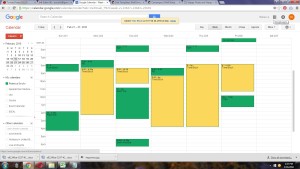
Use these ideas to improve your personal and business productivity!
You might remember this slide from Artist Boot Camp when we talked about time management and blocking out your calendar. I found this short video from Christina Hills at Website Creation Workshop on how and why to use multiple Google Calendars for your business. I’ve been using them this way for some time and agree that it is a smart way to organize time and projects. Here are some ideas for using Google Calendars in your art business.
- Maintain a specific calendar for time blocking studio and marketing work.
- Keep a calendar of due dates for entries to exhibits, festivals, etc…
- Maintain your personal event calendar for workshops, exhibits and other events that you would like to attend, so that you are sure to work them into your schedule.
- Are you blogging? Create a specific content calendar to stay on track for what you will post when. (Yes, I’m taking my own advice for my new blog and website!)
- Use a Google Calendar for your own events or those that you are a part of that you would like to publish to your fan base. Embed the calendar to your website or blog. When it is time to make updates or add an event – all you have to do is make the change in your Google calendar, and it will automatically appear on your site. Fans, in return, can directly add them to their calendars.
Send me an email if you have a question on setting up Google Calendars.

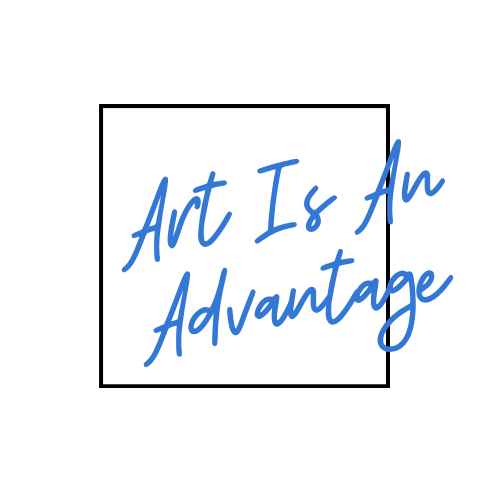




 This post contains affiliate links which means I receive a small commission if you make a purchase using the link. For more information, see my full terms
This post contains affiliate links which means I receive a small commission if you make a purchase using the link. For more information, see my full terms 


